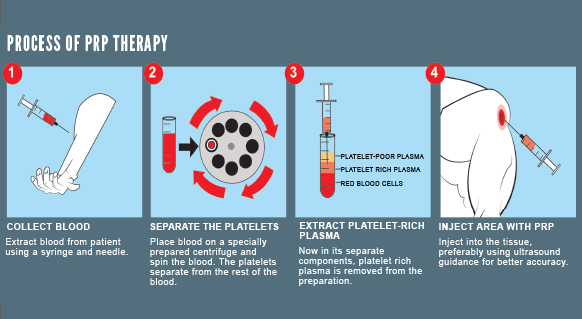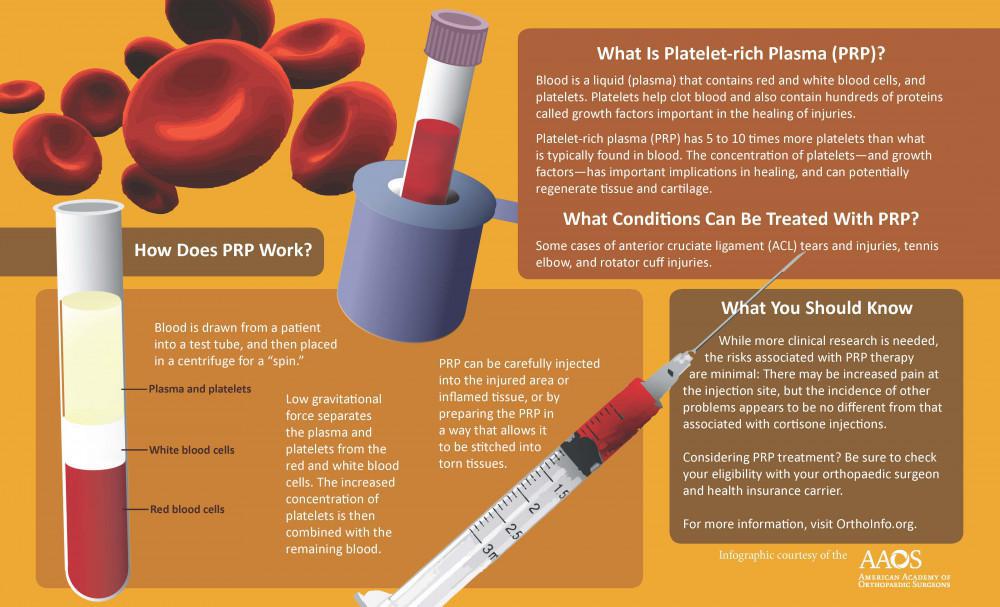 What is Platelet-Rich Plasma or PRP?
What is Platelet-Rich Plasma or PRP?
When you spin blood in a centrifuge, it separates into three main components: the heavy red blood cells at the bottom, then the white blood cells and lastly the lighter plasma at the top. This top layer contains platelets which will lead to the release of growth factors and other healing substances when injected back into the body. This in turn results in a proliferation of cells needed for healthy healing and tissue regeneration. Your own blood is withdrawn, just like having a blood test at the lab, and then it is spun down to create these three layers. Part of the plasma layer with the most platelets is then injected back in your body a few minutes later, in the affected joint or tissue which is causing your pain, to begin the healing process.

